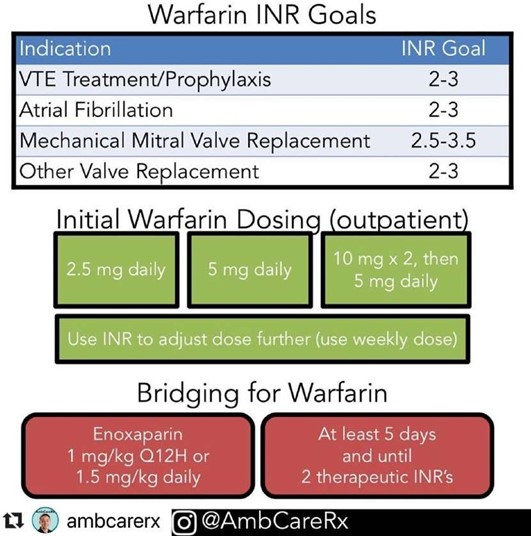A nurse is providing discharge teaching about warfarin to a client who has deep- vein thrombosis.
The nurse should instruct the client to obtain which of the following laboratory tests monthly?
Platelet count.
aPTT.
Fibrinogen.
INR.
The Correct Answer is D

A client who has deep-vein thrombosis and is taking warfarin should obtain an International Normalized Ratio (INR) test monthly.
This blood test measures how fast the blood clots and helps the healthcare provider determine if the client is taking the right dose of warfarin to keep them safe from bleeding and making clots.
Choice A is wrong because Platelet count, is not the correct answer because it measures the number of platelets in the blood and is not specifically related to warfarin therapy.
Choice B is wrong because aPTT, is not the correct answer because it measures the time it takes for blood to clot and is used to monitor heparin therapy, not warfarin therapy.
Choice C is wrong because Fibrinogen, is not the correct answer because it measures the amount of fibrinogen in the blood and is not specifically related to warfarin therapy.
Nursing Test Bank
Naxlex Comprehensive Predictor Exams
Related Questions
Correct Answer is B
Explanation
Compare the current and newly prescribed medications and note any discrepancies.
During medication reconciliation, the nurse should compare the client’s current medication orders with the medications that the client has been taking and note any discrepancies.
Choice A is wrong because Reviewing the adverse effects of the medication with the client, is not part of medication reconciliation.
Choice C is wrong because Sending a list of the prescribed medications to the client’s pharmacy, is not part of medication reconciliation.
Choice D is wrong because Including the medications the client received during surgery on the client’s medication list, is not part of medication reconciliation.
Correct Answer is A
Explanation
This is because pioglitazone can cause fluid retention and edema.
Choice B is wrong because tinnitus (ringing in the ears) is not a common adverse effect of pioglitazone.
Choice C is wrong because insomnia (difficulty sleeping) is not a common adverse effect of pioglitazone.
Choice D is wrong because orthostatic hypotension (a drop in blood pressure when standing up) is not a common adverse effect of pioglitazone.
Whether you are a student looking to ace your exams or a practicing nurse seeking to enhance your expertise , our nursing education contents will empower you with the confidence and competence to make a difference in the lives of patients and become a respected leader in the healthcare field.
Visit Naxlex, invest in your future and unlock endless possibilities with our unparalleled nursing education contents today
Report Wrong Answer on the Current Question
Do you disagree with the answer? If yes, what is your expected answer? Explain.
Kindly be descriptive with the issue you are facing.
